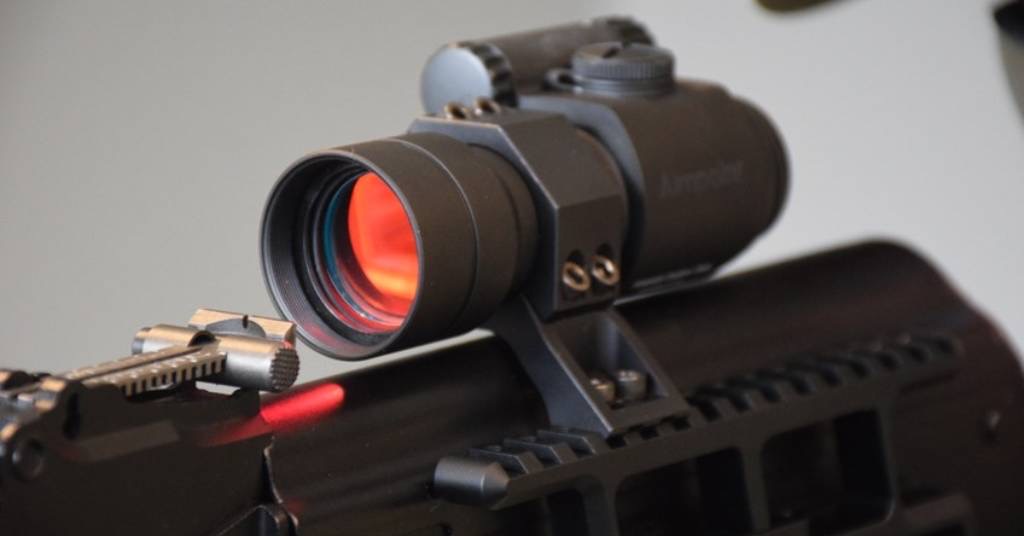Firearm Optics – A Quick Outlook
The whole reason for the existence of firearms is that of hitting a target.
But wait, if you think about it, hitting a target, per se, is a lot more complex than first meets the eye, is it not? - a science if you will.
I do not care which firearm you are shooting with, be it a rifle, a shotgun, a handgun, or whichever, again, if you think about it, it is all about marksmanship.
When shooting a firearm, the whole idea is to hit the “bullseye” – the common name given to any throw, toss, or shot that hits the center of a target.
The ability to hit a target with precision, regardless of which weapon or firearm you are shooting with, is dependent and/or reliant on “optics” – the interaction between the human eye and its ability to see the surrounding environment.
No sooner had man invented weapons, no sooner did the race to improve shooting marksmanship began.
Matter of fact, when talking about firearms, in general, forever back in history, technology and technological improvements have been striving to develop optical systems specifically intended or designed to be used in conjunction with firearms; systems conceived to improve marksmanship – to advance man’ ability to see objects closer to be able to hit distant targets with more precision and accuracy.
While there are a wide-array of optical systems in the marketplace to assist you with your shooting accuracy, in today’s review we will be dealing exclusively with the so-called “red dot sights” – albeit as I consider the latter [red dot sights] one of [the] most essential and valuable aids there are for accurately hitting a target with a firearm.
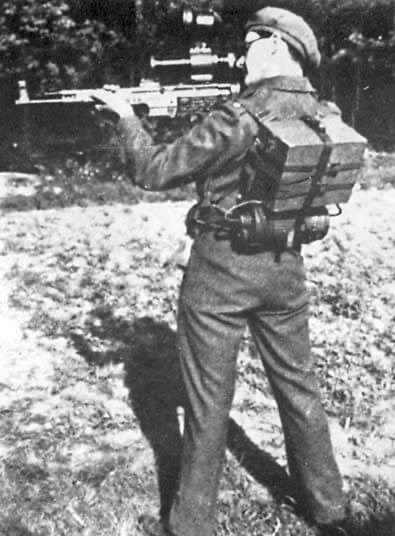
(photo credit: Wikipedia)
In a Rush? Here's the Quick List:
What are Red Dot Sights?
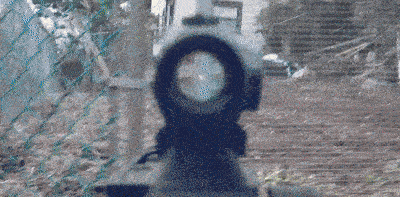
Red dot in action
In the most straightforward, the most uncomplicated way I can describe it, a red dot sight is a common classification for a type of non-magnifying reflector or reflex sight for firearms that requires aiming, giving the user a point-of-aim, in the form of an illuminated red dot.
Red dot sights help the shooter to aim better by placing, as the name implies, a “red dot” on the target via the reticle –a pattern of fine lines or markings built into the eyepiece to provide measurement references during visual inspections.
For the record, red dot sights are extremely user-friendly, and they can be of significant help to first-time shooters by simplifying their aiming technique.
Red dot sights are considered by many to be a fast-acquisition and easy-to-use system, mostly utilized for civilian target shooting, hunting and/or police, military, and other law-enforcement applications.
Red dot sights are also found on cameras and telescopes, then again, this would be the subject matter of an entirely different review.
How do Red Dot Sights Work?
A red dot sight uses a tilted sphere-shaped mirror that reflects the red LED, allowing the reticle to be in alignment with your firearm regardless of the position of the eye.
The mirror, as such, is coated to allow only the red light to pass through it.
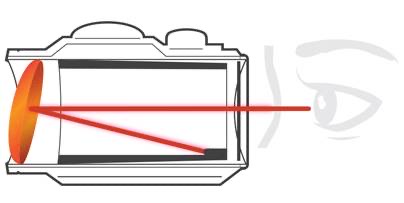
(img credit: Holosun)
Red dot sights allow you to aim easily against darker backgrounds.
Red dot sights are typically used at close range, usually around 100 yards or less.
The LED light consumes virtually no energy, and as such they provide for lengthier times of usage.
To be sure, red dot optics are 1x and do not feature built-in magnification at all – therefore we do not call these systems scopes, the latter requiring magnification in addition to visual aiming.
As a rule-of-thumb, there is consensus that red dot sights can be helpful when hunting for fast-moving targets at a closer range.
Vis-à-vis, when using smaller red dots, it will give you higher precision for longer distance shots.
The position of the mirror in red dot sights allows the viewer to see the red dot when aiming at a target.
Conversely, the dot cannot be seen from the opposite side of the system to avoid scaring away animals or other living targets while no light is given off.
About Red Dot Sights
History
Red dots were invented in the mid-70s.
That said, it is important to know their origin.
A red dot sight is a modern version of what is commonly known as a “reflex sight” a/k/a “reflector sight.”
A reflex or reflector sight is a device that projects an image in a field of view.
To do so, these systems commonly use reflecting glasses that make the target image appear as if it was right in front of the viewer.
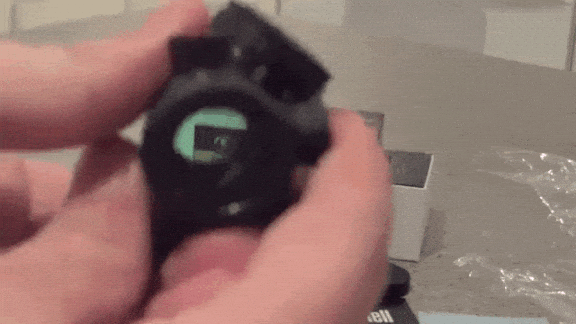
(img credit: Gifs.com)
The projection causes the “dot” or crosshair to stay on target irrespective of the eye movement.
Red dots have come a long way in the past 50 years, moreover as we have seen major improvements in terms of clarity, image quality, and battery life as well.
One of [the] most relevant technological advancements seen in the development of red dot sights has to do with their size.
Nowadays, these systems have been reduced to where they are compatible with most firearms, from full-sized rifles to handguns and everything in between.
Mind you, “red dot” as such is commonly used as a blanket or generic term to describe a multitude of sight systems that, normally speaking, produce a similar effect.
MOA
When dealing with red dot sights, we all need to be familiar with the popular MOA acronym, which stands for “minutes-of-angle.”
MOA is a unit of measure that indicates the size of the dot and how much area it covers relative to the distance to a target.
A dot of 1 MOA is equivalent to about 1 inch in diameter at 100 yards.
As an example, if you are shooting a firearm to hit a target at 100 yards and your dot sight is 3 MOA, that means all your shots will land within a 3-inch area in your target, assuming obviously that you are aiming at the same point for each shot.
Generically speaking, whenever deciding as to which is the right or best MOA for you, it is all relative to the precision desired in the shot.
You must choose if you want higher precision at farther distances, or if you want to hit fast-moving targets that are not too far away.
Red dot with a 4 MOA or less is ideal for shooting when precision and accuracy are a priority.
Red dots with 4 to 5 MOA are, you may say, a safe option for fast shooting and precision.
Vis-à-vis, larger than 5 MOA is great for aiming and shooting fast, typically when you are hunting fast moving targets.
Red Dot Sights Styles
Red dot sights come in two fundamental styles:
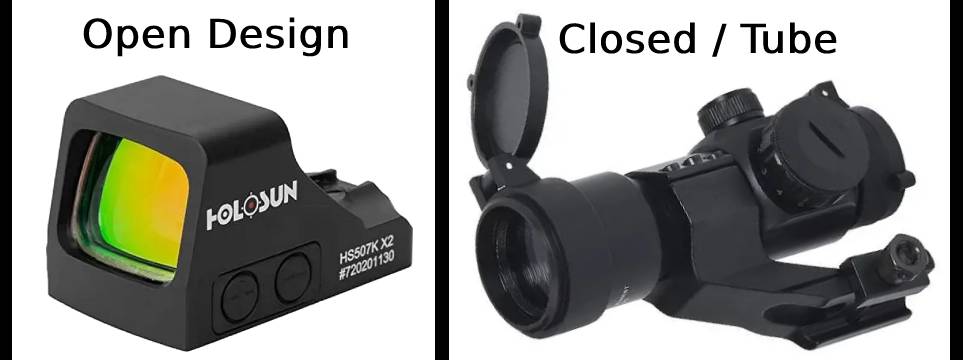
1) Open or 2) Closed.
“Closed” sights require an additional lens at the front of a tube to protect the light source from the elements.
Vis-à-vis, “Open” reflex sights, as implied by their name, are open to the environment.
In addition, there are several kinds of red dot optics nowadays available in the marketplace, each of which is designed to fulfill distinct roles, or perform in diverse ways.
Below, a list of the most common types of red dot optics now available as follows:
Standard Rifle Optics
You may say that most red dot sights are tube-based designs, made specifically for use in full-sized firearms.
These systems frequently use a 2 to 3 MOA red dot, and a 25 mm or more objective lens, designed for close to moderate range shooting.
Miniature Red Dots
Miniature red dots, as implied by the name, refers to the smallest of red dot sights, specifically made for pistol sights and backup used in standard rifle optics.
Miniature red dot sights have been progressively getting smaller and smaller with each year.
Bottom line, miniature red dots have become a good option for CCW [Concealed Carry] – for carrying a concealed weapon.
Holographic Sights, Red Dots Sights & Reflex Sights
Historically, the term holographic sights, red dot sights and reflex sights are incorrectly thrown around interchangeably.
Truth of the matter is that red dots and holographic sights work on two distinct principles.
While red dots use a LED emitter to project a reticle onto glass, holographic sights, instead, use a laser diode and mirrors to project a reticle that appears to be drifting on the target.
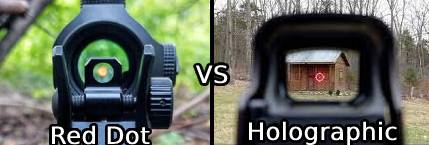
Reflex sights, on the other hand, are more common than red dots and/or what most people refer to as “red dots.”
Reflex sights, as such, provide a much wider field of view than their red dot counterparts.
That said however, with reflex sights the optics are not protected from the elements, and they are likely to malfunction whenever the light path is obstructed in any way.
The principal advantage offered by reflex sights is that they can be easily reduced in size to accommodate pistols and SBR’s [short-barreled rifles].
Pros and Cons of Red Dot Sights
If you are seriously considering the purchase of a red dot sight system, then, it is in your best interest to know beforehand the “Pros” and “Cons” of these systems as follows:
Pros
Cons
Common Uses of Red Dot Sights
Red dot sights are commonly used in speed shooting sports such as IPSC [International Practical Shooting Confederation].
Military units, police forces and law-enforcement personnel have also adopted these systems.
In addition, red dot sights are also extremely popular among paintball and airsoft players.
As red dot sights have no magnification, shooters need not worry about parallax or eye relief – the distance from the rear eyepiece lens to the exit pupil or eye point.
The long eye relief of red dot sights makes them fitting for firearms with heavy recoil that might otherwise drive a conventional short eye relief telescopic sight into the shooter’s eye.
Since red dot sights can be mounted at any distance from the shooter’s eye, this leaves plenty of room for Night Vision [NV] equipment to be used in conjunction with red dot sights.
The mounting flexibility has been of particular interest in the use of these systems for military rifles.
Once again, as mentioned earlier, miniature red dot sights are becoming increasingly popular for use on pistols, handguns; for carrying a concealed weapon.
They have also become trendy for use in both competition and military applications.
Best Red Dot Sights – Our Top Picks
So, it is fair to say, I have already given you some of the most basic information needed to make an informed decision in the purchase of a red dot sight system.
Next, I will try and make your purchasing decision even simpler by sharing with you some of my top picks, and/or the systems which I personally regard as the best that money can buy.
Historically, when choosing my top tactical gear picks, I have disregarded price-points while basing my choices mostly on quality, craftsmanship, and so forth.
Today, however, I am glad to say, I will be sharing my picks, based on price-point ranges, as per the following categories:
As always, my mission statement here is to help all of you as best I can, to make the right decision in purchasing the red dot sight that best suits your needs.
I – Budget-Friendly Picks [Up to $150.00]
QUick List
1. Ozark Armament Rhino Red Dot Sight
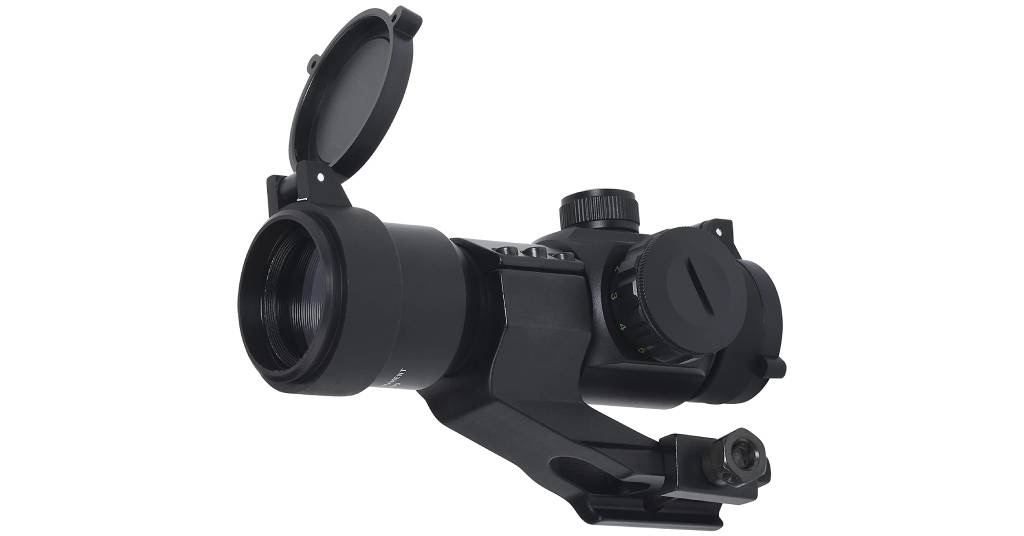
Ozark Armament Rhino Red Dot Sight
Specifications
ConClusion
Like I promised, this sight is, by far, one of the best that money can buy for what you are going to spend.
At a price point of around $40, this is it.
The Ozark is made of rugged construction with nitrogen purged housing waterproof and fog proof.
It boasts a wide field of view with adjustable brightness.
It is an all-metal scope except for the lenses and lens caps.
The manufacturer suggests each click is about ½” at 100 yards.
All said and done, there is no other optic that offers so much for so little.
If you are an apprentice shooter, a novice, this would be an ideal system for you.
2. Bushnell TRS-25 Red Dot Sight
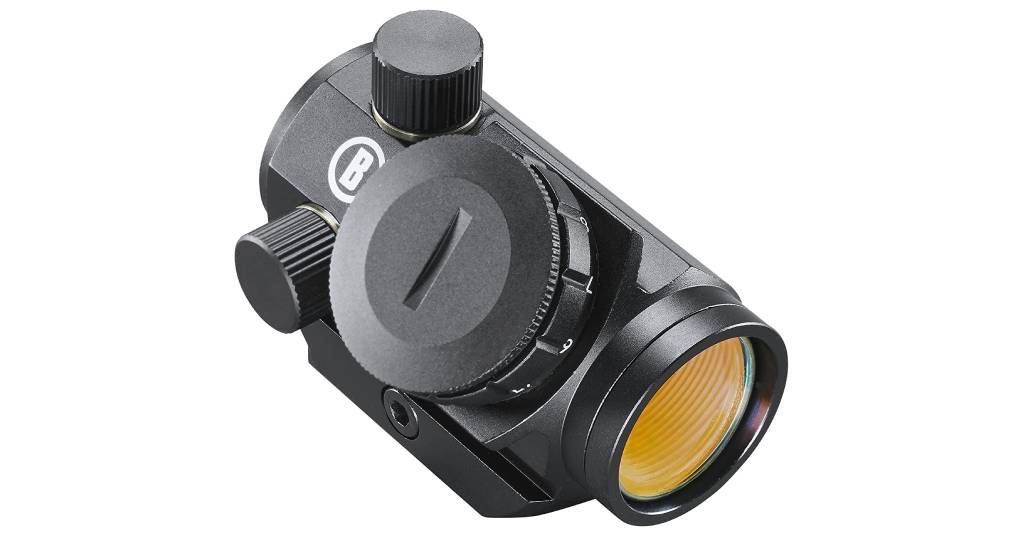
Bushnell TRS-25 Red Dot Sight
Specifications
ConClusion
Again, in keeping my word, this is yet another sight which gives you a lot for your money.
At less than $100 you just cannot beat the price of this optic.
I personally own a Bushnell TRS-25, so my comments on the Bushnell TRS-25 are not hearsay but are from my own personal experience.
What can I tell you? It is built strong to last you a long time.
At 3.7 ounces, this sight is compact and lightweight as well.
The TRS-25 was designed for hunting at night with a dark background and/or in low-light environments, all provided by the scope’s multi coated optics.
Equipped with tactical turrets for rapid windage and elevation adjustments.
The battery life is simply incredible.
I have used this sight at full brightness for prolonged periods of time and have had no problems whatsoever with the battery life.
I could go on and on, and, as you can tell, I am sold on this system which I highly recommend for you to consider in your purchasing options.
3. Sig Romeo MSR Red Dot Sight
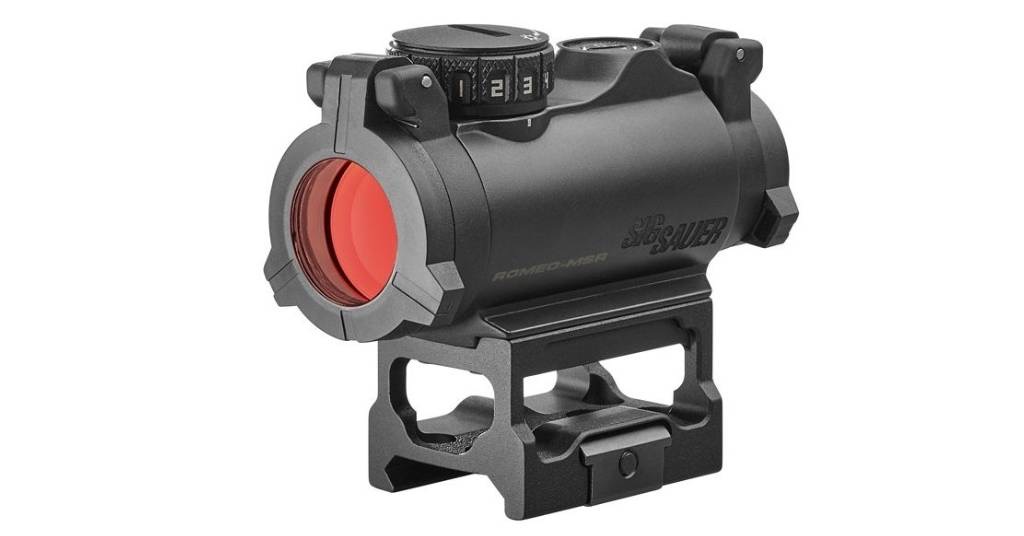
Sig Romeo MSR
Specifications
ConClusion
Here is yet another system deservedly included in this budget-friendly category.
In the price range of less than $100, the Sig Romeo MSR Red Dot Sight is, simply said, a great buy.
It is a simple system to install and comes with a translucent glass for the red dot.
This is, I must say, a basic sight, small but tough.
This is an amazing optic for the money. Comes with lift-up lens protectors.
The manufacturer claims to have 20,000 hours of battery life, which, I personally do not find this to be an issue even though most systems nowadays offer 50,000 hours and more.
All said, I really think the price on this one offsets the minor drawbacks that you may find.
I would check this one out before you make your final decision.
4. Holosun Micro 2 MOA Red Dot Sight
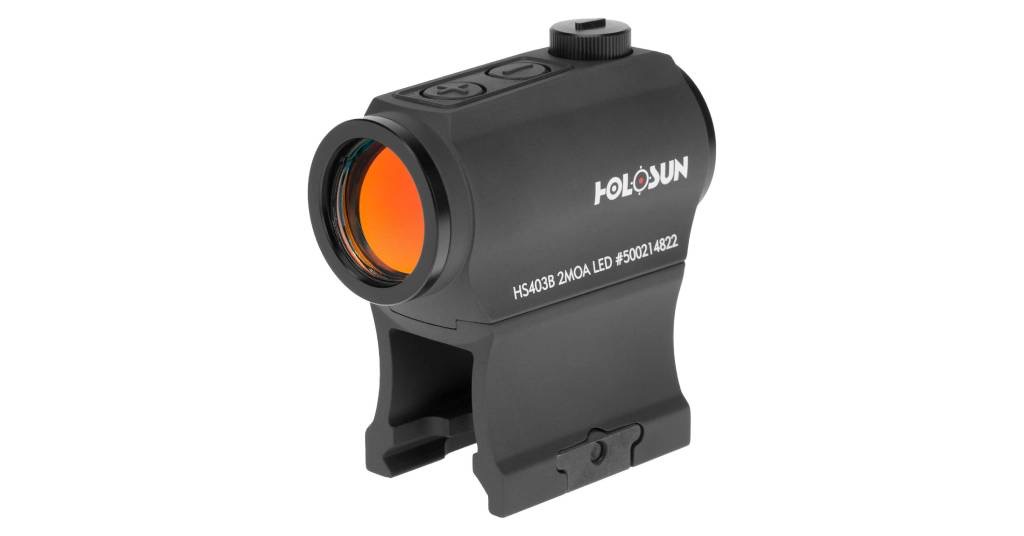
Holosun Micro 2 MOA
Specifications
ConClusion
So, the Holosun Micro 2 MOA Red Dot Sight comes with all kinds of added-value features if yet sold at a very affordable price, thus my choosing this sight as one of my top budget-friendly picks.
For starters, as implied by its name, the Holosun Micro 2 has a 2 MOA red dot reticle that is parallax-free, offering unlimited eye relief.
As noted in the above-captioned specifications, the Holosun Micro 2 MOA, boasts a battery-life of up to 50,000 hours and, presumably, could last 5 years of continued use.
You can mount this sight on anything that has a rail system such as crossbows, assault rifles, pistols, and shotguns as well.
The Holosun Micro 2 can be equally used in daytime or at night with two night vision brightness levels.
Bottom line, if you are looking for a high-quality, dependable red dot sight at a very affordable price, this is the system you are looking for.
Check this one out before making your final decision.
5. Primary Arms SLx Microdot Red Dot Sight
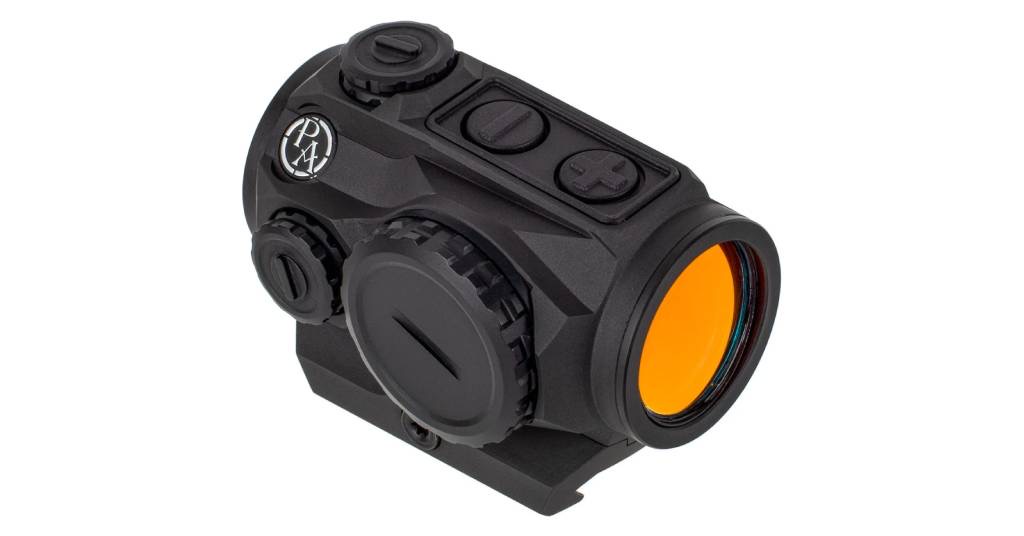
Primary Arms SLx Microdot Red Dot Sight
Specifications
ConClusion
At the number 5 position in my top budget-friendly picks is the Primary Arms SLx Microdot Red Dot Sight.
At a price point of approximately $130 dollars, this system has a lot to offer as compared to some of the pricier sights out there.
This Primary Arms sight is part of the SLx optics line, known for their innovation, reliability, and value.
What I personally like the most about this system is that it is made of solid construction with clear optics.
This sight offers features often seen in sights that cost a lot more.
Bottom line, this is an excellent quality red dot.
No issues with zero, dot brightness, clarity, and durability.
The battery life on the Primary Arms is amazing and the Night Vision [NV] settings work well too.
I just like this one for what it offers at a very, very affordable price point.
II – Mid-Range Affordable [$200 - $300]
QUick List
1. Vortex Strikefire II Red Dot Sight
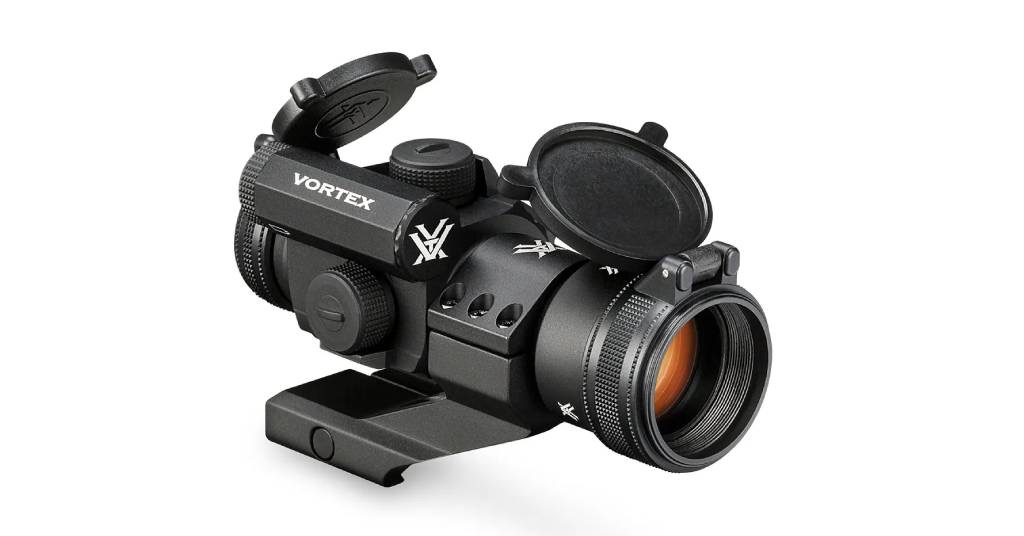
Vortex Strikefire II
Specifications
ConClusion
So, the Vortex Strikefire II is made with durable 30mm aluminum which has a hard-anodized finish making it waterproof, fog-proof, and shockproof.
This is a solid system, which you can depend on.
The reticle is 4 MOA and can illuminate in either a red or a green dot.
It also has 10 Night Vision levels.
This sight is parallax-free, meaning that it will remain in a fixed position even if you move your head.
Since the battery life is limited, the manufacturer includes a 12-hour auto-shutdown feature designed specifically to extend the life of the battery.
If you are looking for a dependable red dot sight in a mid-range price point, look no further, this is it.
2. Holosun HS403C Red Dot Sight
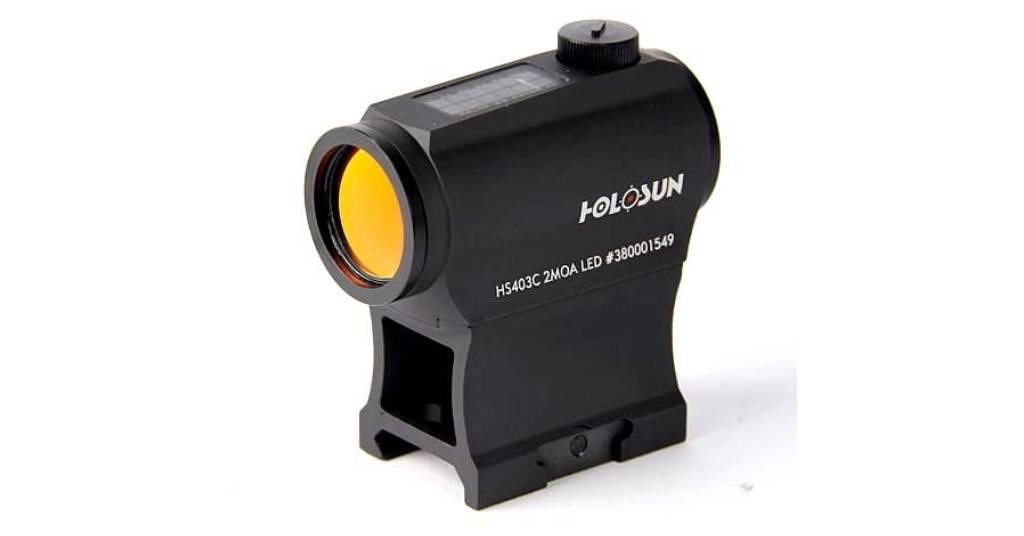
Holosun HS403C
Specifications
ConClusion
Holosun has a good reputation for making optics that run on solar energy.
The Holosun HS403C has the capability of using both solar energy and / or a CR2032 battery as a backup.
This system can be powered by both natural and artificial light as well.
The solar array is designed to recognize the brightness level of the environment, which, in turn, allows the option to have the brightness of the red dot to be automatically adjusted.
One of my preferred features offered by this sight are the adjustment knobs and buttons which allow you to easily see all around the sight.
For a mid-range price point of $200, this red dot sight has what you need and then some.
3. Burris Fastfire III Red Dot Sight
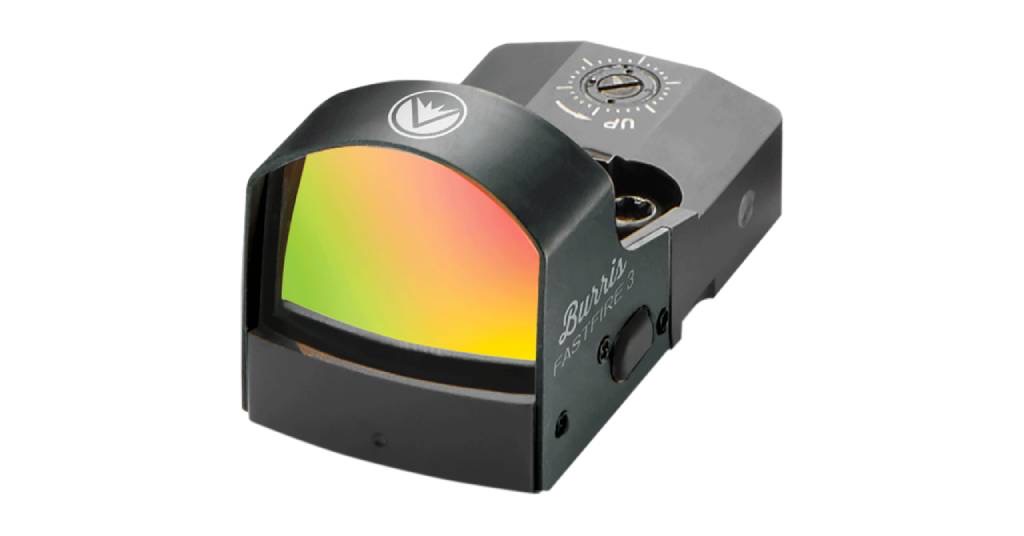
Burris Fastfire III
Specifications
ConClusion
My favorite feature of the Burris Fastfire III red dot sight is that it comes with two reticle options:
This optic is lightweight at only 9 oz.; however, it is constructed from steel for added strength and durability.
The Burris Fastfire III Red Dot Sight comes with a Picatinny mount, which will allow you to fit it to any weapon with a rail, including pistols, crossbows, rifles, and shotguns as well.
The reticle on this sight has an automatic brightness mode and has 3 manual brightness levels which provides for ideal sight captures.
The CR1632 battery can last up to 5 years.
One of the added-value features of the Burris Fastfire III is its lifetime warranty.
All said, at this price point, this system has much to offer worthy of your consideration.
4. Vortex Crossfire Red Dot Sight
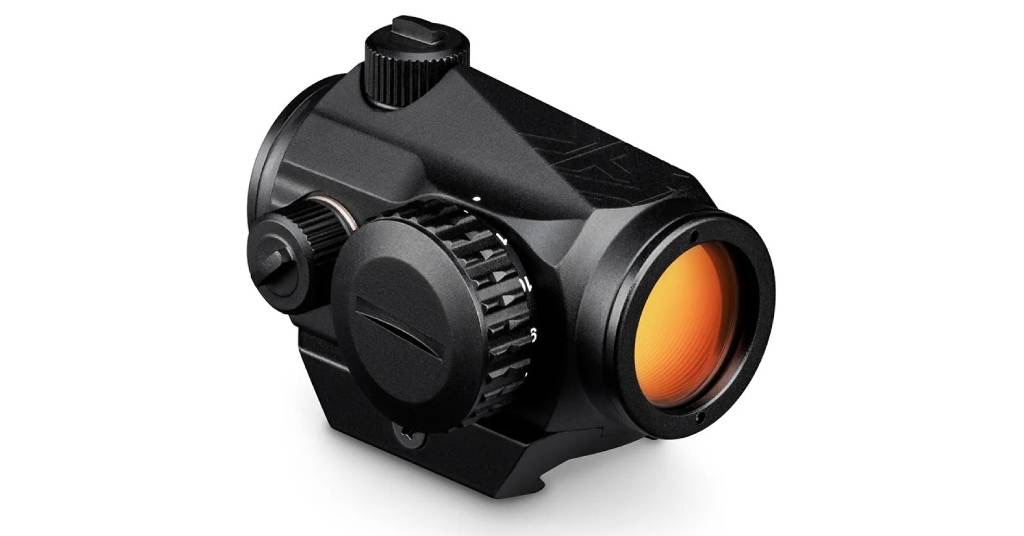
Vortex Crossfire
Specifications
ConClusion
The Vortex Crossfire Red Dot Sight has an exceptionally good sight picture and a translucent glass for any sight in this price category.
The battery life is limited to only 7,000 hours.
Notwithstanding this limitation however, this is, still, a great option at the price-point offered.
My comfort level with the Vortex Crossfire is the lifetime warranty offered by the manufacturer.
5. Holosun HS5507K-X2 Red Dot Sight
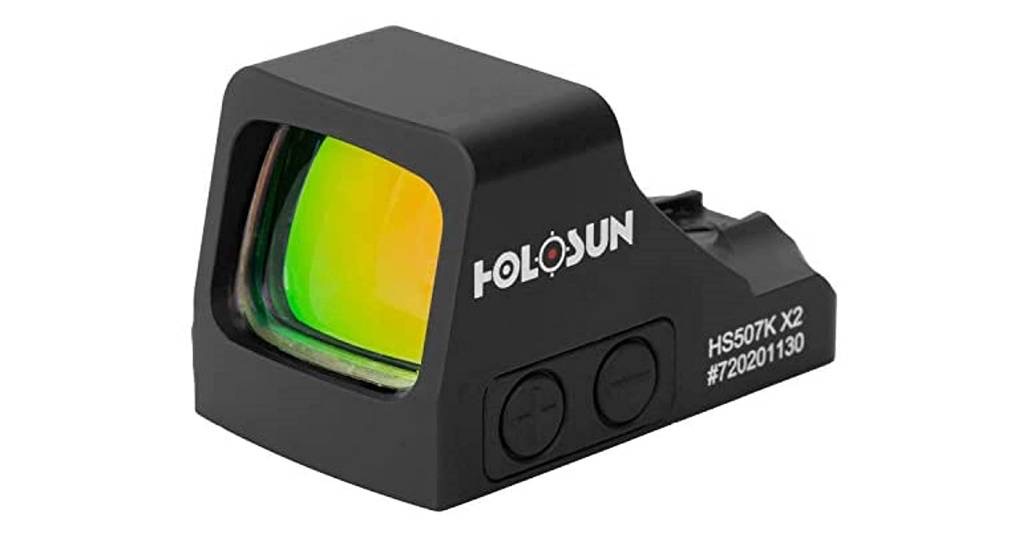
Holosun HS5507K-X2
Specifications
ConClusion
So, yes, I do like Holosuns and the HS5507K-X2 Red Dot Sight which happens to be one of my favorites.
This one comes with all kinds of built-in options.
Designed specifically for use on personal-defense handguns, the Holosun HS5507K-X2 is outfitted with a viewing window that is great for aiming at your target.
The 50,000 hrs., battery life has 6 settings, and it is easily replaceable.
As an added-value feature, the Holosun HS5507K-X2 comes with its Lock-Mode – which locks all the settings on the optic in case any buttons are mistakenly pushed when your firearm is in its holster, thus avoiding the loss of any pre-set sight arrangements.
For the price, this one should be given some deserved consideration.
III – High-End Systems [$500 - $1,000]
QUick List
1. Aimpoint CompM5s Red Dot Sight
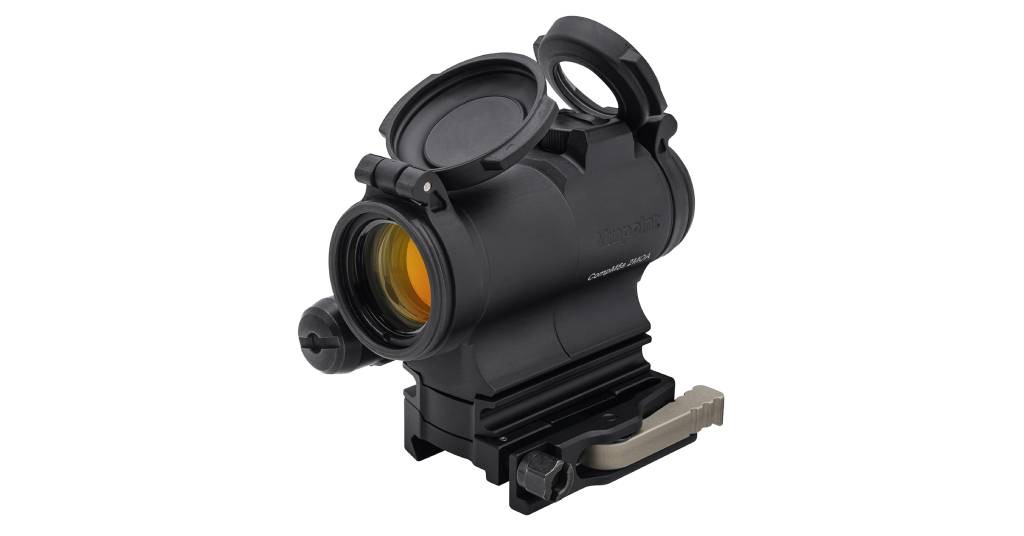
Aimpoint CompM5s
Specifications
ConClusion
Yes, this is a pricey toy but, then again, as always, you get what you pay for.
To be sure, this one just has all the bells and whistles.
This is a high-performance red dot sight developed to endure all kinds of tough-handling engagement situations.
The CompM5s features protective flip-up lens covers and new lenses with enhanced reflective coatings designed to improve the 2 MOA dot – an ideal match with the 3XMag-1 and 6xmAG-1 magnifiers.
The CompM5s comes with a low battery compartment and a mounting base keyed to the body of the sight to absorb recoil.
The turrets were reinforced with increased rugged construction made of high strength anodized aluminum.
The sight housing is constructed of hard-anodized aluminum alloy for best protection of the electronic and optical components.
The standard mount and spacer are easily interchangeable for the mission and equipment of your choice.
If you can afford it, this is a state-of-the-art sight which is why I have chosen it as my top pick in this high-end category.
2. Aimpoint Micro T-2 Red Dot Sight
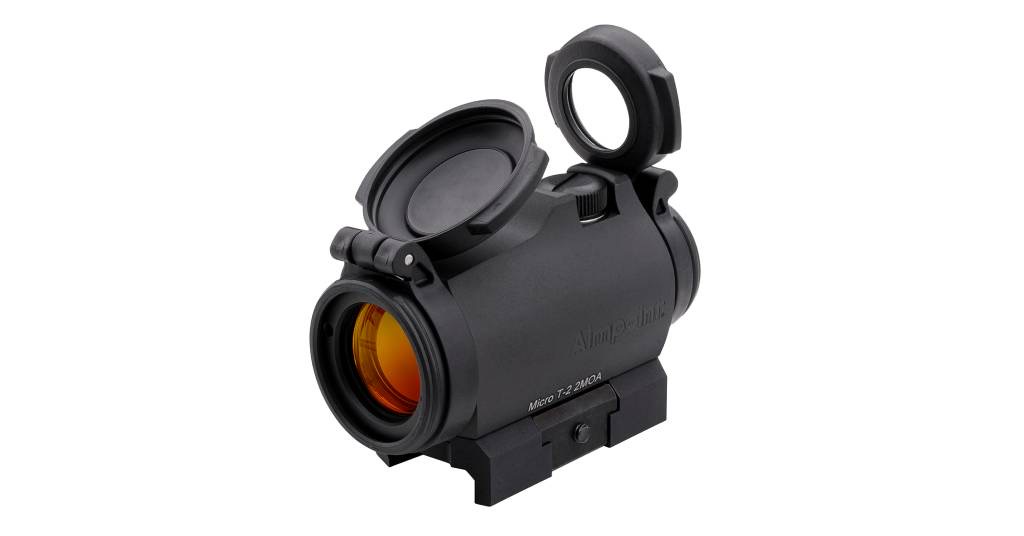
Aimpoint Micro T-2
Specifications
ConClusion
When it comes to red dot sights, the name Aimpoint is synonymous with high-priced optics.
Then again, it is also synonymous with high-quality sights, thus the reason for the price-point.
The Micro T-2 comes with the battle-proven legacy of the Aimpoint systems – pioneers of red dot sights.
This optic has all the features which made it a preferred choice for military and law-enforcement professionals.
The Aimpoint Micro T-2 features an 18mm clear aperture and a 2 MOA LED projected red dot reticle.
Powered by a CR2032 Lithium battery, you can expect a battery life of 50,000 hours.
As far as weapons are concerned, the T-2 can be compatible with rifles, carabines, shotguns, and even handgun applications designed for close-range mission engagements.
Bottom line friends, Aimpoint sights are renowned as the best that money can buy.
All said, you cannot go wrong with an Aimpoint red dot sight system.
Do yourself a favor and check this one out.
3. Meprolight Foresight Red Dot Sight
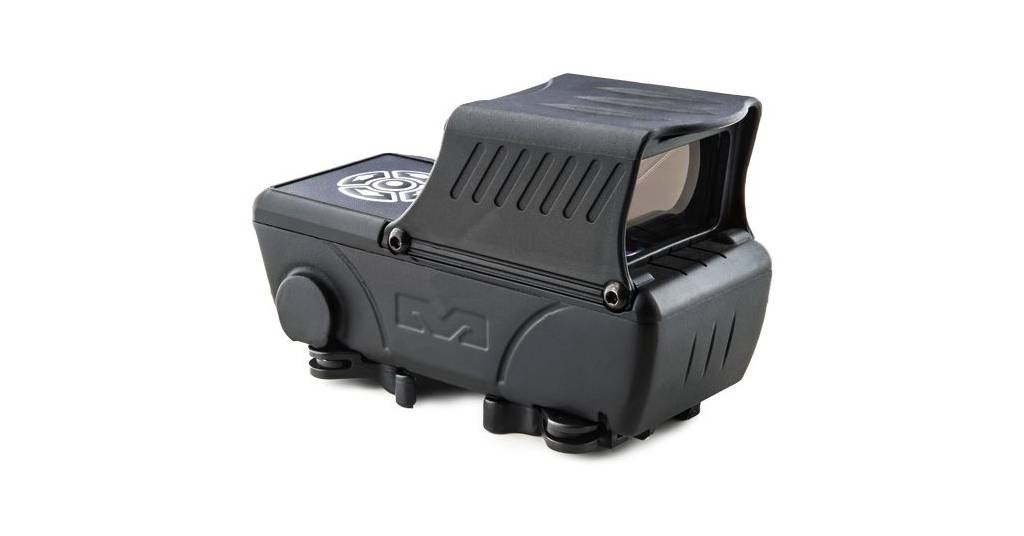
Meprolight Foresight
Specifications
ConClusion
To be sure, the Meprolight Foresight Red Dot Sight is an ideal sight for hunters and for sharpshooters who are looking to improve their aiming accuracy.
This sight was designed with an advanced Bluetooth technology that is meant to deliver real-time data while allowing you to easily interchange reticles.
The Meprolight Foresight connectivity to a smartphone will allow you to easily switch weapons and will provide you with an easy means to zero the optic.
The rechargeable battery is an added-value feature which will save you money while still providing you with the necessary power needed for the day-to-day missions.
While I am aware that this system does not come at a low-cost price point, you are, once again, getting what you pay for.
If you are into high-tech products, better check this one out.
4. EOTech OPMOD EXPS2 Holographic Red Dot Sight
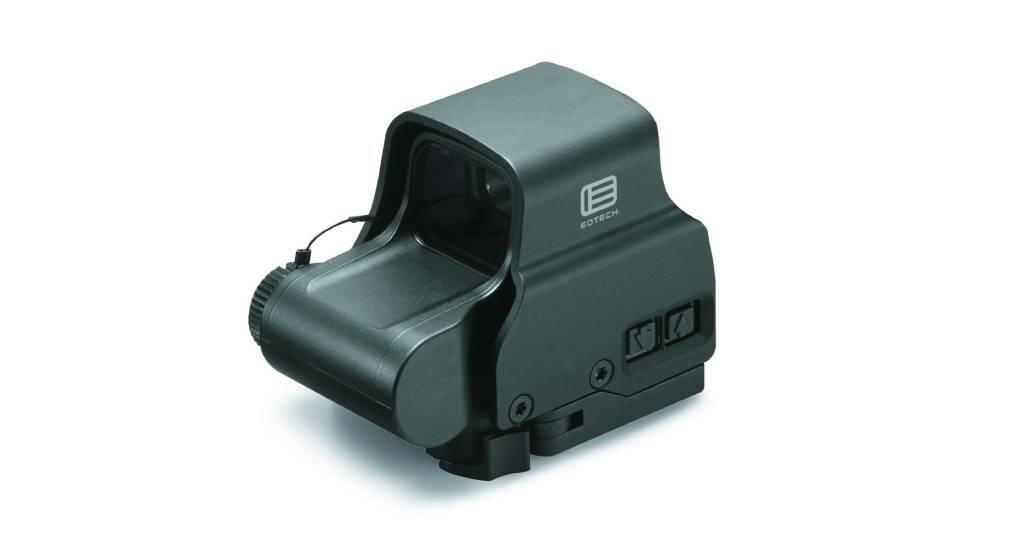
EOTech OPMOD EXPS2 Holographic Red Dot Sight
Specifications
ConClusion
The EOTech OPMOD EXPS2 comes with a holographic parallax-free 1 MOA reticle.
The reticle options include a single or double 1 MOA reticle with a 69 MOA ring, available in red or green as well.
I have owned this sight for a while and, honestly, I could not be more pleased with it.
One of my favorite features is their crystal-clear view with a fog-proof optic that is waterproof up to 33 feet.
This sight comes with a 146,000: 1 brightness range with 30 settings and it can provide up to 1,000 hours of a single CR123 battery.
So, the EOTech OPMOD EXPS2, is a high-end optic, priced accordingly.
That said, however, this sight was designed to be shockproof, waterproof and it comes with 3/16” shatter-resistant rear lens and a 2-year manufacturer’s warranty – all of which relates to its price-point.
If your pocketbook can accommodate a sight at this high-end price range, then I strongly recommend you check this one out before making your final decision.
5. Trijicon MRO [Miniature Rifle Optic] Red Dot Sight
Trijicon MRO [Miniature Rifle Optic]
Specifications
ConClusion
As far as red dot sights are concerned, the Trijicon MRO ranks right up there with the best that money can buy – that simple.
For me personally, this must be one of the frontrunners.
No, for sure this is not a budget-friendly option but let me justify why I suggest for you to consider this one.
For starters, the Trijicon is renowned for their ACOG [Advanced Combat Optical Gunsight] fixed magnification scope.
To understand, the ACOG systems have been effectively adopted by the United States military since 1987 and have been battle-proven as one of the best modern combat optics.
My contention is, if it is good for our military, it should be good for the rest of us as well.
I could go on and on with many extra features.
Suffice it to say however, yes, the Trijicon MRO is not an inexpensive, budget-friendly optic and, yes, there are, as seen before, some less-expensive sights out there.
However, the Trijicon MRO, is guaranteed to be well-worth what you pay for it, relative to what you will get in return for your investment or ROI.
Red Dot Sights – Buying Guide
To put it all into perspective, yes, we all agree, I would hope, that red dot sights are, indeed, a must-have tool in your tactical gear arsenal – no questions about that.
That said, however, with such a spectacular variety of systems available in the marketplace nowadays, purchasing a red dot sight can become a rather intimidating and/or overwhelming experience.
In response to such complexity, I thought it would be a fitting way to end my review today by providing you with a summary “buying guide” of the principal areas you should take into consideration when purchasing such an important gear.
Below please find some of these considerations.
Range
As mentioned earlier, there are limitations in what we can expect when using red dot sights.
The principal restriction being the range or distance at which red dot sights are typically used, to wit, around 100 yards or less.
This, considered to be close-range, limiting its uses to those looking for long-range or distant shooting.
Notwithstanding its close-range limitation however, as of late, 3x and 6x red dot sight magnifiers have become increasingly popular accessories that allow for increased and enhanced accuracy on more distant targets.
Size
Without a question, one of the very first issues to consider is the size of the red dot sight.
Admittedly all sights essentially perform the same task, however, the size of your weapon will be detrimental to which sight is the right size one for you.
For instance, a small handgun would be more compatible with some of the smaller red dot sights while a shotgun or rifle is better matched with a larger sight.
Bottom line, it is in your best interest to make sure the size of the red dot optic you purchase is the one that will best fit your weapon[s].
Battery
Another important matter to consider in the purchase of a red dot sight is the battery, relative to both: life and ease-of-access.
Consider this, for example, there are all kinds of unique, special-order batteries out there, which are not in your best interest to purchase.
That is, of course, notwithstanding whatever added value benefits these special-order batteries may bring in terms of the performance of your weapons outweighing the access inconvenience.
In addition to access, you also must consider battery life.
As noted in most of the specifications above, typically, manufacturers specify the expected battery life.
This is one of the primary considerations you should always give when purchasing a red dot sight.
Reticle / MOA
Another yet major consideration when you purchase a red dot sight is the MOA.
Remember, this is a unit of measure that indicates the red dot size and the area covered relative to the distance to the target. The measuring unit is expressed in inches.
So, I am frequently asked the question, what is the best MOA for a red dot sight?
Well, right off the bat, my answer is, it all depends on what you are looking for in terms of how close and how fast your moving target is.
Some of the most common MOA red dot sizes range from 3 to 5.
A 4 MOA dot is best suited for close range, and a 6 MOA is best used for close and fast-moving targets, where shooters only have a split-second to align a shot.
A 6 MOA is the more commonly used red dot size for most defensive and law enforcement missions.
Vis-à-vis, a 2 MOA is best used for longer ranges.
Style
Another major consideration deals with choosing between an open style or tube option.
Open styles are also known as a window design because they use a small square-shaped window.
The open tube option, as the name implies, has all the interior components housed within an enclosed tube.
I say both options have their “pros” and “cons.”
The tube style offers a more limited scope of vision since it is enclosed.
On the other hand, it is more protected which can make it last longer.
The window or open sight offers a better scope of vision and is somewhat lighter, but it is more exposed to damages.
Summary and Conclusion
So, like I said at the opening of this review, I personally think red dot sights have become one of [the] most useful systems available to all firearms owners – that simple.
Again, when it comes to shooting a weapon or firearm, regardless, it is all about sharp-shooting and marksmanship, and, by default, it is all about aiming accuracy and hitting a target.
As such, the function, the development, and the role played by red dot sights is critical to achieving this objective.
To be clear, nowadays, there are limitless types of red dot sights available in the marketplace.
They come in all shapes, sizes, types, styles, price-points, you name it.
My review today, I venture to say, barely scrapes the surface of this wonderfully exciting line of optics, which are, simply put, a bare necessity for all firearm owners.
Notwithstanding the vastness of red dot sight options now available, I honestly hope that my review today has, in some way or another, helped guide you in your purchasing journey, as well I expect to have narrowed down the choices in such a way as to make this a pleasurable experience for you, regardless of which sight you end up buying.
Whichever the case, I wish you good luck and hope that my review today was instrumental in your picking the red dot sight system which best suits your needs.

